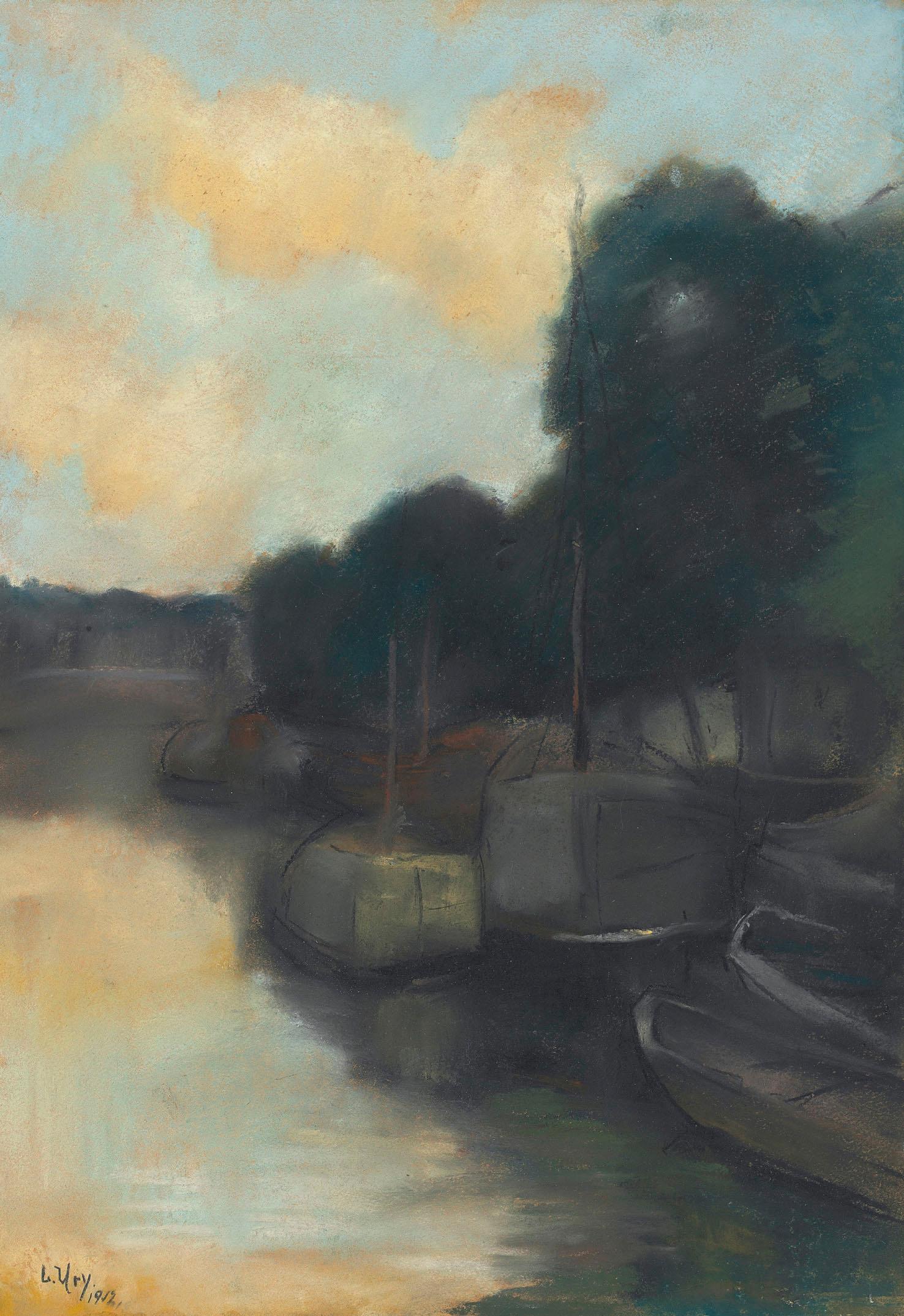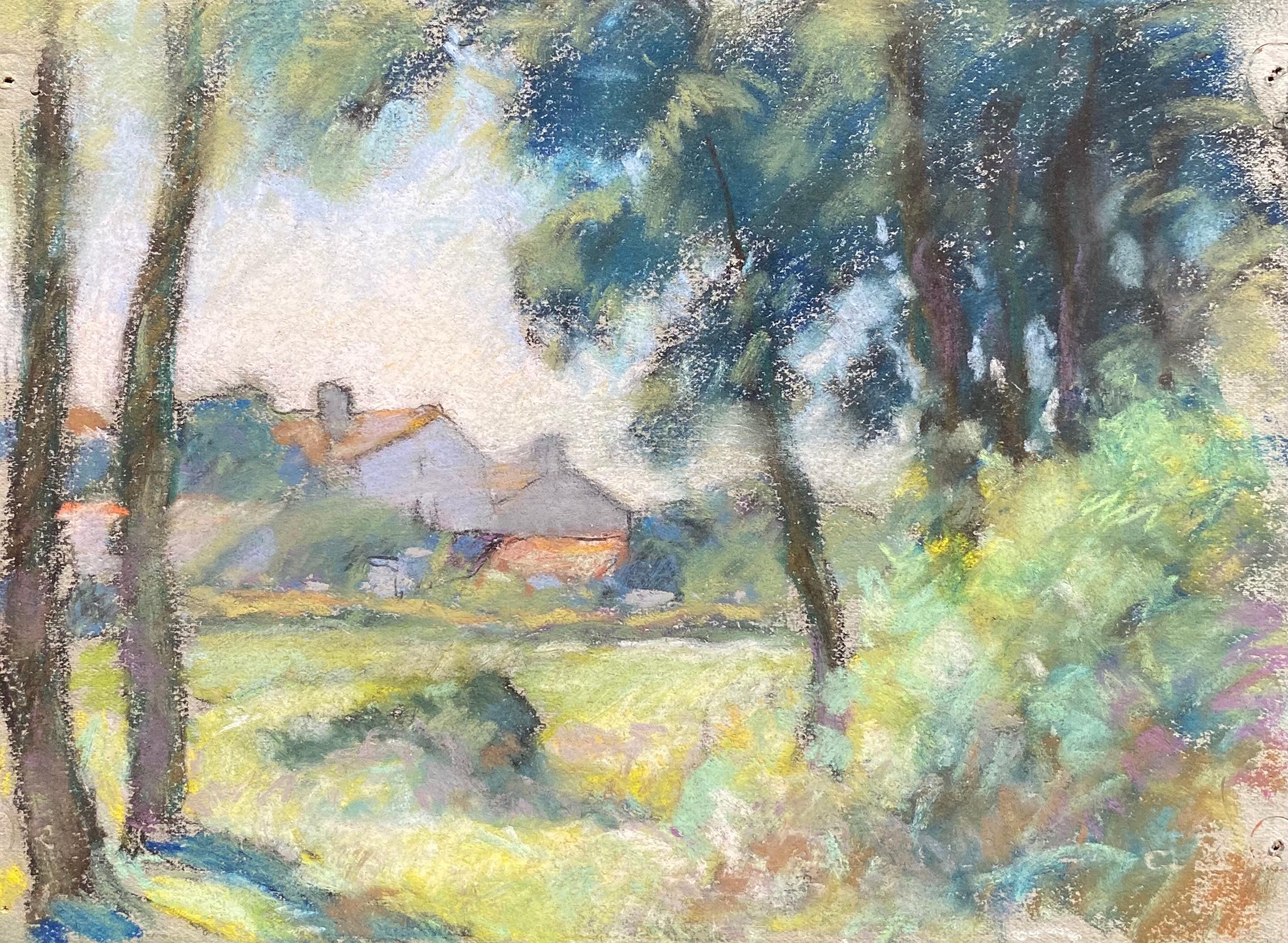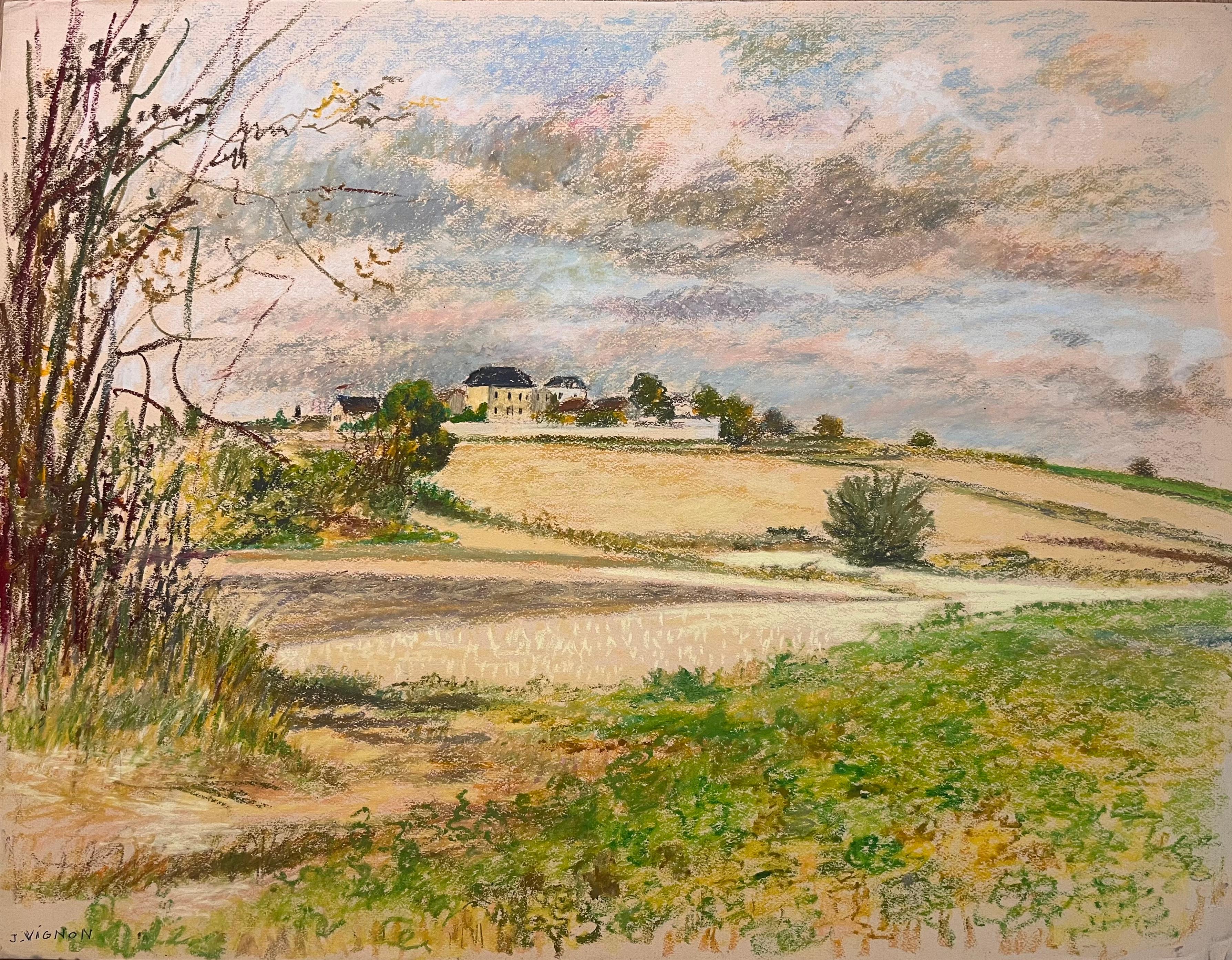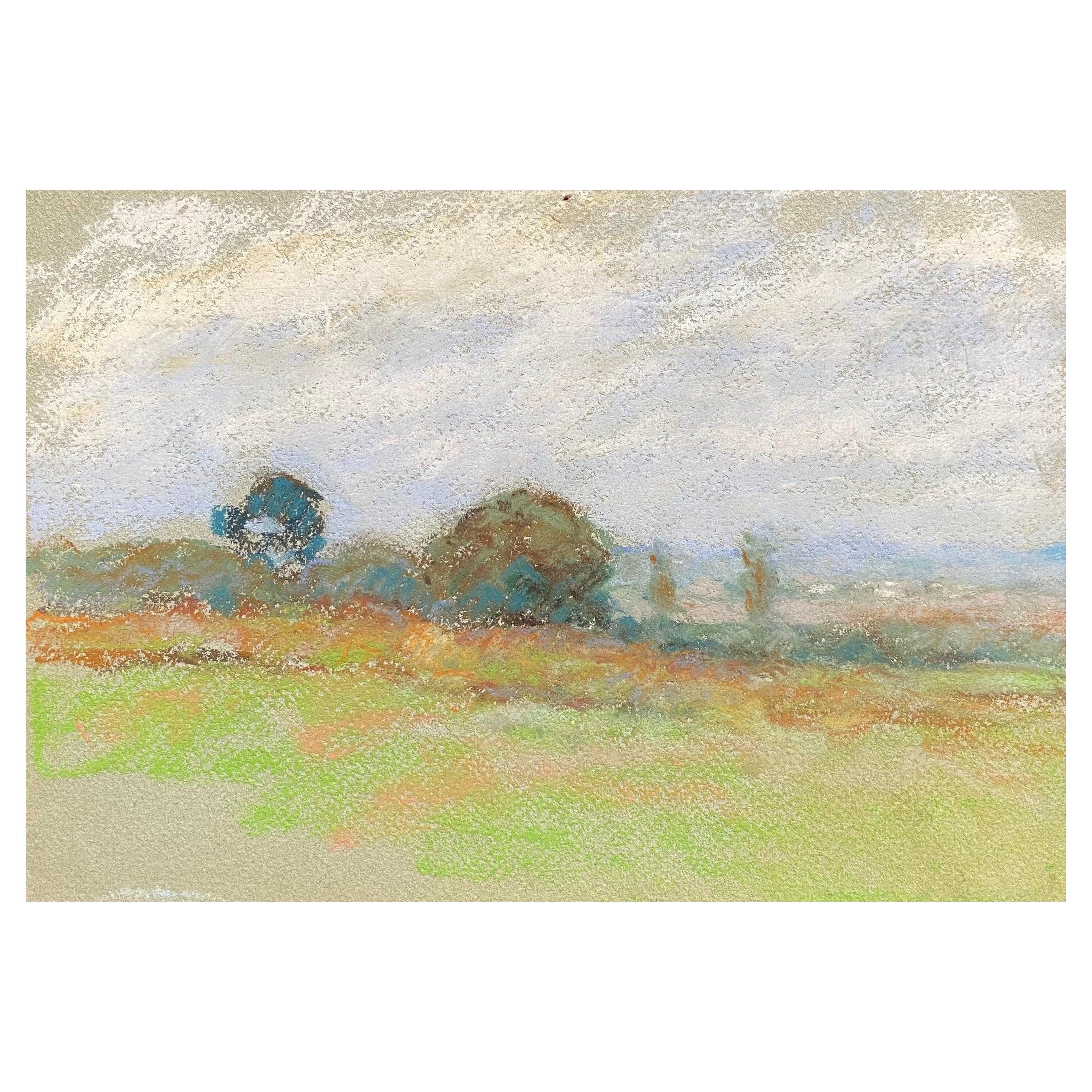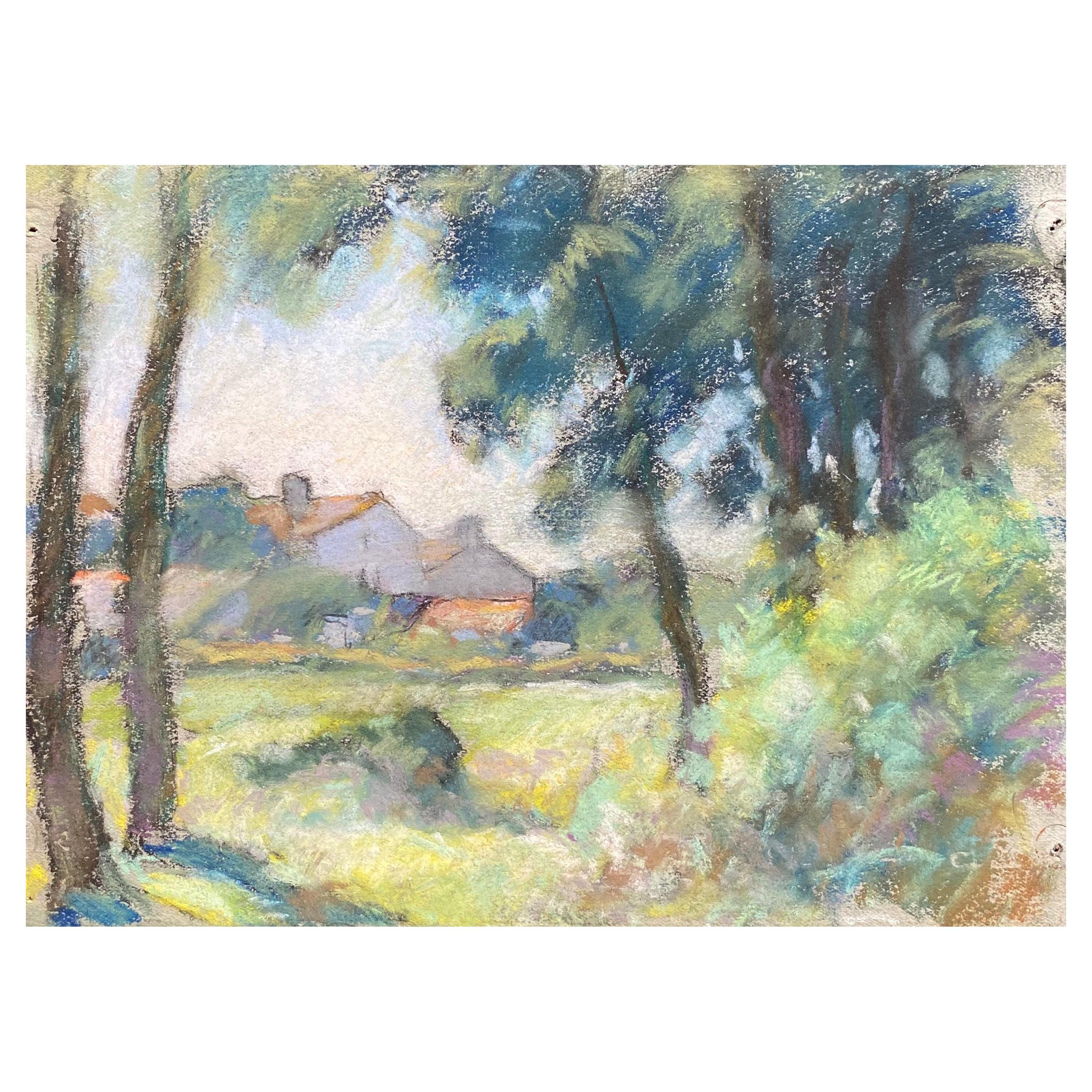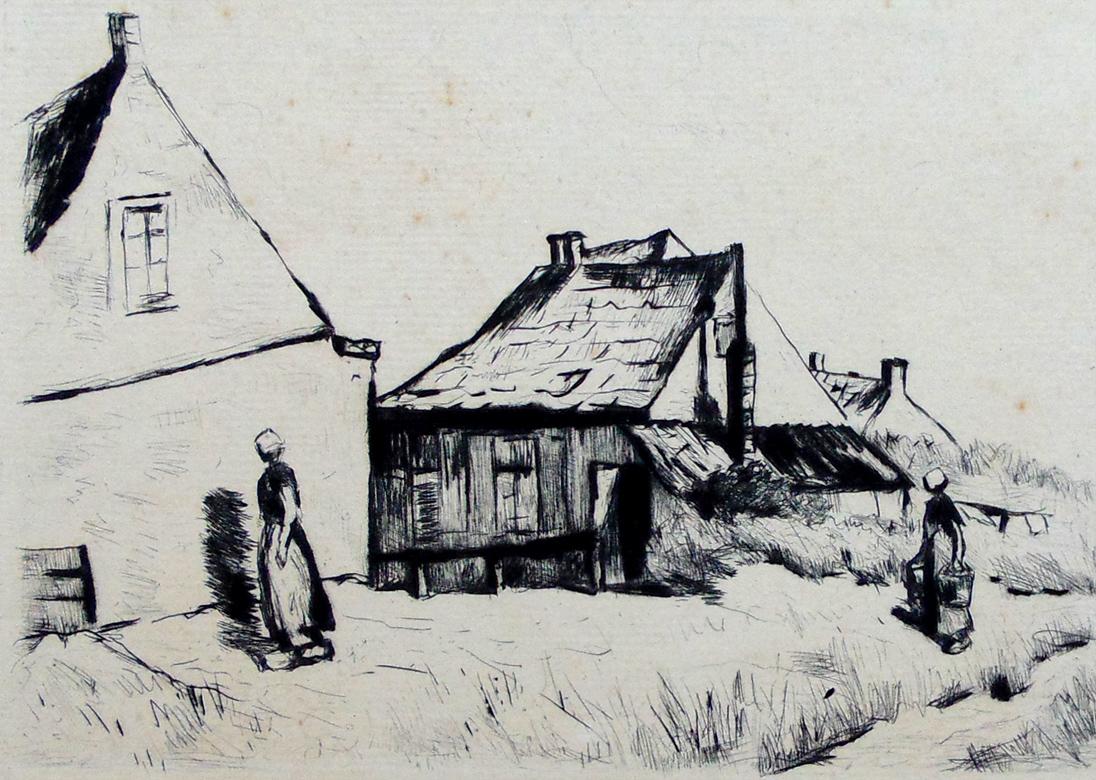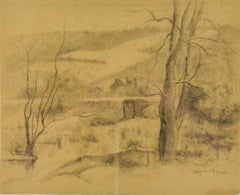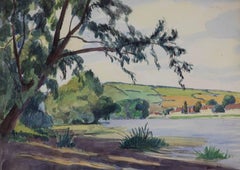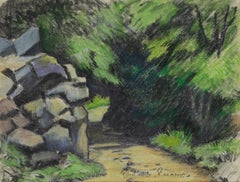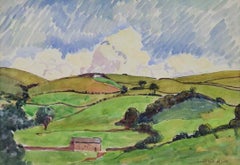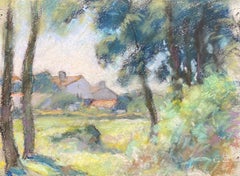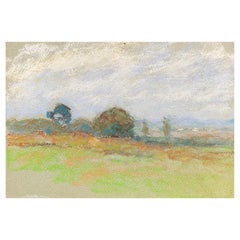Items Similar to Landscape by Lesser Ury - Pastel on paper
Want more images or videos?
Request additional images or videos from the seller
1 of 8
Lesser UryLandscape by Lesser Ury - Pastel on paper1911
1911
$35,000
£26,393.47
€30,525.32
CA$49,104.81
A$54,583.05
CHF 28,611.27
MX$666,591.11
NOK 357,195.14
SEK 336,053.99
DKK 227,832.12
About the Item
*PLEASE NOTE UK BUYERS WILL ONLY PAY 5% VAT ON THIS PURCHASE.
Landscape by Lesser Ury (1861-1931)
Pastel on paper
50 x 70 cm (19 ³/₄ x 27 ¹/₂ inches)
Signed lower left
Executed in 1911
Provenance: Private collection, Israel
Artist biography:
German-Jewish artist and printmaker Lesser Ury grew up in Berlin and as a young man had his admission to the Berlin Academy of Art rejected. In consequence he pursued his studies at several other leading European art academies of the time: Düsseldorf, Paris, Brussels and finally Munich. In 1887 he returned to Berlin and exhibited for the first time to mixed reviews. However, his work found favour with influential fellow-artist Adolph von Menzel whose support for Ury induced the Academy to award Ury a Prize.
An exhibiting member of the Munich Secession, Ury’s competitive relationship with the influential Berlin artist Max Liebermann effectively barred his work from exhibition with the Berlin Secession until 1915. Thanks to the influence of artist Lovis Corith, the Berlin Secession exhibition of 1916 and 1922 prominently featured work by Ury and garnered great acclaim.
As a master of the oil painting, Ury created flower pictures, still lifes, nocturnal cafe scenes and rainy urban streets scenes. His subjects were diverse and created in an Impressionistic manner that ranged from the subdued tones of figures in a darkened interior and the effects of streetlights at night to the dazzling light of foliage against the summer sky. Whilst Ury’s work is often associated with metropolitan scenes and interior floral still lifes, his extensive travels throughout Germany and Italy thanks to developed his characteristic landscape styles. A master of the pastel technique, the intense colours of his compositions with their subtle transitions and contrasts, the movement of air and the reflections of light, mark Ury’s workout unquestionably modern.
Often introverted and distrustful of people, Ury became increasingly reclusive in his later years. Yet for the city of Berlin Ury felt a special bond of sympathy. Upon his 60th Birthday in 1921 it was the Mayor of Berlin who honoured Ury as "the artistic glorifier of the capital". Ury died in his Berlin studio, just three weeks before his 70th Birthday and the commemorative exhibition due to open in his honour at the city’s Nationalgalerie.
- Creator:Lesser Ury (1861-1931, German)
- Creation Year:1911
- Dimensions:Height: 19.69 in (50 cm)Width: 27.56 in (70 cm)
- Medium:
- Period:
- Condition:
- Gallery Location:London, GB
- Reference Number:1stDibs: LU261213642932
About the Seller
5.0
Recognized Seller
These prestigious sellers are industry leaders and represent the highest echelon for item quality and design.
Gold Seller
Premium sellers maintaining a 4.3+ rating and 24-hour response times
Established in 1964
1stDibs seller since 2015
104 sales on 1stDibs
Typical response time: 2 hours
Associations
Society Of London Art Dealers
- ShippingRetrieving quote...Shipping from: London, United Kingdom
- Return Policy
Authenticity Guarantee
In the unlikely event there’s an issue with an item’s authenticity, contact us within 1 year for a full refund. DetailsMoney-Back Guarantee
If your item is not as described, is damaged in transit, or does not arrive, contact us within 7 days for a full refund. Details24-Hour Cancellation
You have a 24-hour grace period in which to reconsider your purchase, with no questions asked.Vetted Professional Sellers
Our world-class sellers must adhere to strict standards for service and quality, maintaining the integrity of our listings.Price-Match Guarantee
If you find that a seller listed the same item for a lower price elsewhere, we’ll match it.Trusted Global Delivery
Our best-in-class carrier network provides specialized shipping options worldwide, including custom delivery.More From This Seller
View AllPaysage en Normandie by Georges Manzana Pissarro - Charcoal landscape
By Georges Henri Manzana Pissarro
Located in London, GB
Paysage en Normandie by Georges Manzana Pissarro (1871-1961)
Charcoal on paper
32 x 39 cm (12 ⅝ x 15 ⅜ inches)
Stamped lower right, Manzana Pissarro
Executed circa 1930
Artist biogr...
Category
1930s Post-Impressionist Landscape Drawings and Watercolors
Materials
Paper, Charcoal
Paysage de Rivière, Watercolour on Paper by Ludovic-Rodo Pissarro, circa 1930
By Ludovic-Rodo Pissarro
Located in London, GB
Paysage de Rivière by Ludovic-Rodo Pissarro (1878-1952)
Watercolour on paper
28.5 x 38.6 cm (11 ¼ x 15 ¼ inches)
Signed with Estate stamp lower right Ludovic Rodo
Executed circa 1930...
Category
20th Century Post-Impressionist Drawings and Watercolor Paintings
Materials
Paper, Watercolor
Un Chemin dans la Forêt by Paulémile Pissarro - Pastel and charcoal drawing
By Paul Emile Pissarro
Located in London, GB
Un Chemin dans la Forêt by Paulémile Pissarro (1884-1972)
Pastel and charcoal on paper
24 x 31 cm (9 ¹/₂ x 12 ¹/₄ inches)
Stamped lower middle-right, Paulémile Pissarro
Provenance
E...
Category
Mid-20th Century Post-Impressionist Figurative Drawings and Watercolors
Materials
Charcoal, Paper, Pastel
Paysage, Watercolour on Paper Painting by Ludovic-Rodo Pissarro, circa 1920
By Ludovic-Rodo Pissarro
Located in London, GB
Paysage by Ludovic-Rodo Pissarro (1878 - 1952)
Watercolour on paper
28 x 36 cm (11 x 14 ⅛ inches)
Signed lower right, Ludovic Rodo
Executed circa 1920
This work is accompanied by a...
Category
1920s Impressionist Landscape Drawings and Watercolors
Materials
Paper, Watercolor
Paysage à Chippenfield by Ludovic-Rodo Pissarro - Landscape watercolour
By Ludovic-Rodo Pissarro
Located in London, GB
*UK BUYERS WILL PAY AN ADDITIONAL 20% VAT ON TOP OF THE ABOVE PRICE
Paysage à Chippenfield by Ludovic-Rodo Pissarro (1878-1952)
Watercolour and ink on paper
23 x 33 cm (9 x 13 inche...
Category
1910s Post-Impressionist Figurative Drawings and Watercolors
Materials
Paper, Ink, Watercolor
Paysage by Hugues Pissarro dit Pomié, 1992 - Oil on Canvas Painting
Located in London, GB
Paysage by Hugues Pissarro dit Pomié (B. 1935)
Oil on paper
31 x 23.7 cm (12 ¹/₄ x 9 ³/₈ inches)
Signed lower left H. Claude Pissarro and dated 1992 lower right
This work is accompa...
Category
1990s Contemporary Landscape Paintings
Materials
Oil, Paper
You May Also Like
Lesser Ury - Auf dem kanal, impressionist, pastel, german, waterscape, canal
By Lesser Ury
Located in London, GB
Lesser Ury (1861-1931)
Auf dem Kanal
1912
pastel on board
49.2 x 34.9 cm
signed and dated 'L.Ury.1912.' (lower left)
Price:
$25,000 USD
Provenance:
Sale: Christie's London, 30 June 2000, lot 42
Collection of Simone and Jean Tiroche (acquired at the above sale)
Thence by descent
Sale: Christie's London, 19 June 2013, lot 199
Private collection, UK (acquired from the above sale)
Notes:
Dr Sibylle Gross has confirmed the authenticity of this work.
Lesser Ury, a German-Jewish Impressionist...
Category
1910s Impressionist Landscape Drawings and Watercolors
Materials
Pastel, Board
Camille Meriot Mid 20th Century Pastel French Impressionist painting Rural Field
By Camille Meriot
Located in Cirencester, Gloucestershire
"Rural Field"
by Camille Meriot (French 1887-1975)
pastel on unframed paper
paper: 6.75 x 9.5 inches
Fine original French Impressionist painting by the well listed and popular Fren...
Category
Mid-20th Century Impressionist Landscape Paintings
Materials
Pastel
Mid Century French Original Pastel Drawing of Countryside Landscape
By Josine Vignon
Located in Cirencester, Gloucestershire
Title: Mid Century French Original Pastel Drawing of Countryside Landscape
Artist: Josine Vignon (French 1922-2022)
Medium: Oil Pastel on artist paper
Size: 19.75 (height) x 25.5 ...
Category
Mid-20th Century Impressionist Landscape Paintings
Materials
Oil Pastel
$820 Sale Price
30% Off
Camille Meriot, Pastel French Impressionist Green Countryside View
Located in Cirencester, Gloucestershire
"Country Fields"
by Camille Meriot (French 1887-1975).
Pastel on unframed paper.
Paper: 6.75 x 9.5 inches.
Fine original French Impressionist painting by the well listed and popular...
Category
Mid-20th Century Landscape Paintings
Materials
Acrylic
Camille Meriot Mid 20th Century Pastel French Impressionist Painting Rural Field
Located in Cirencester, Gloucestershire
"Rural Field"
by Camille Meriot (French 1887-1975)
pastel on unframed paper
paper: 6.75 x 9.5 inches
Fine original French Impressionist painting by the well listed and popular Fren...
Category
Mid-20th Century Landscape Paintings
Materials
Acrylic
Dutch Themes - 7 Etchings German Impressionism
By Lesser Ury
Located in London, GB
This complete set of seven etchings and drypoint is hand signed in pencil by the artist "L. Ury" at the lower right margin of each print.
It was printed circa 1920 in a limited edit...
Category
1920s Impressionist Figurative Prints
Materials
Etching
More Ways To Browse
Antique Paper Flowers
Landscape Drawings Flowers
Antique Pastel Painting
Bond Oil Painting Landscape
Rainy City
Oil Painting Rainy Paris Street Scene
Adolph Menzel
Ury Lesser
William Leighton Leitch
Wood Gaylor
Anna Boghiguian
Charles Perry Weimer
Charles Sidney Raleigh
Cornelius Pearson
Dan Lutz
David Smith Lowestoft
Dixie Selden
Edith Hume
